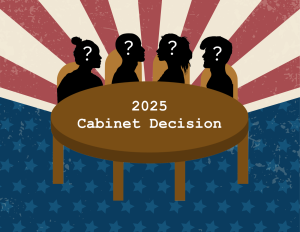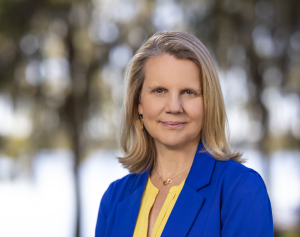On Oct. 23, I spent two hours with the Occupy Orlando group. It was its eighth day of occupying the Senator Beth Johnson Park in front of the Orlando Chamber of Commerce. The group is the local version of the seminal Occupy Wall Street movement in New York.
I arrived at the park, unsure of what to expect. A number of people from the group had been arrested by police the evening before.
Indeed, I found that the park had been roped off with yellow police tape. The former occupants had generally relocated themselves across the street, to the sidewalk in front of the Chamber of Commerce building. Many were huddled in groups sitting on folding chairs. Some were sitting on their parked cars. A few were asleep in sleeping bags in the thin strip of grass between the sidewalk and the street. A bus was parked nearby, serving as a shelter. Two police cruisers were stationed on either side of the area where protesters had gathered. Both officers were surfing the Web when I walked by their cruisers.
Before I was able to really speak to anyone and ask any questions, a young woman nearby announced that she was going to take a walk downtown, and anyone who would like to come was welcome. I followed as a group assembled to walk downtown. It was a small group, with no more than 10 people when we started out. People carried signs that said things like “Where’s our Bailout?” and “Protect the Right to Assemble.” Some had charts drawn in marker.
We set out from the park just before 1 a.m. and walked down Orange Avenue heading south. Few cars approached us on that thinly populated stretch from the Lake Ivanhoe area to Colonial Drive, but those that did were regaled with messages relating to government infiltration by corrupting financial agents. Mostly the passengers of the cars honked and waved, perhaps in solidarity, perhaps just to wave.
One gentleman was holding a sign that read, “End the Fed” on one side. As we walked, I spoke to him about why he was out here with this group.
He explained to me that he was a small business owner; a capitalist. He was tired of seeing politicians being bought by lobbyist groups. He felt that our fundamental system of government was threatened by this corruption. I asked him if he had been a part of groups like this before. He told me he had been active in many political movements, but never one this large. Although he did not agree with everything everyone in the group advocated, he was glad to see a group like this mobilized.
As we approached the entertainment oriented area of downtown Orlando, our group of protesters met face to face with the very people we were trying to inform.
The walk achieved mixed results. In the space of our walk down the east side of Orange from Colonial to South Street, and then back down the west side of the street, the protesters were met with a wildly varied response.
Some people reacted quite negatively. When a protester yelled out that their votes did not count in the current government, a man walking down the sidewalk screamed expletives at him. As it passed in front of the lines stretched out before music-thumping nightclubs, the group seemed only capable of drawing amused smiles and mocking repetition of their chants. When the group chanted about the arrests from the previous evening, someone distinctively yelled, “Good!” Some club patrons, predictably, screamed “Shut up.” Others yelled, “Get a job!” One of the protesters retorted, “I have a job. I make over $50,000 a year.” None of the hecklers seemed to be capable of a response to her statement.
A street preacher, riffing on the theme of occupation, informed the gathered crowd that people need to occupy their hearts with Jesus. One of the protesters engaged him in discussion, although I admit that I did not hear what was said.
For all the negativity, though, some observers reacted in solidarity. A few people gave the protesters hugs. Others cheered them on, shook their hands, and asked to take pictures. People gave classic peace signs. A street musician with a saxophone played an impromptu solo rendition of “New York, New York.” Two bicycle cab operators cheered them on, one even yelling that he would be down to the park after work to join in.
Three separate groups of club-goers stopped to ask questions, which were answered enthusiastically. Most listened attentively and shook hands with the protesters before departing.
Before I left, I was asked to take a picture of the group in front of the Bank of America sign on Orange. I complied, grateful that they let me tag along on their march (although I realize having a photographer along adds another layer of protection from potential harassers).
It was not clear if these protesters wanted any one particular thing to end their occupation of our small Chamber of Commerce building area. That seems to be the point for many of the protesters who are participating in similar occupations across the U.S. and overseas. They all seem to want a change, they seem to want to end corruption, and they want to prevent another economic recession driven by what they see as corporate greed.
Despite the lack of a single, unified message being issued by the Occupy movement (different groups have released assorted manifestos at this point), people in the media and in the halls of Congress are starting to notice that these protesters are not going away. Their anger is not subsiding, and their message has not yet been fully received (or even fully conceived). Meanwhile, their numbers are growing. Their movement is spreading. Perhaps it might be said that the point of the movement at this point is simple awareness that there is, in fact, a problem. Across the U.S., including in Orlando, the Occupy movement is ready to stay in place as long as necessary to create this awareness. These protesters are clearly willing to take their message directly to the people of the city.









Be First to Comment